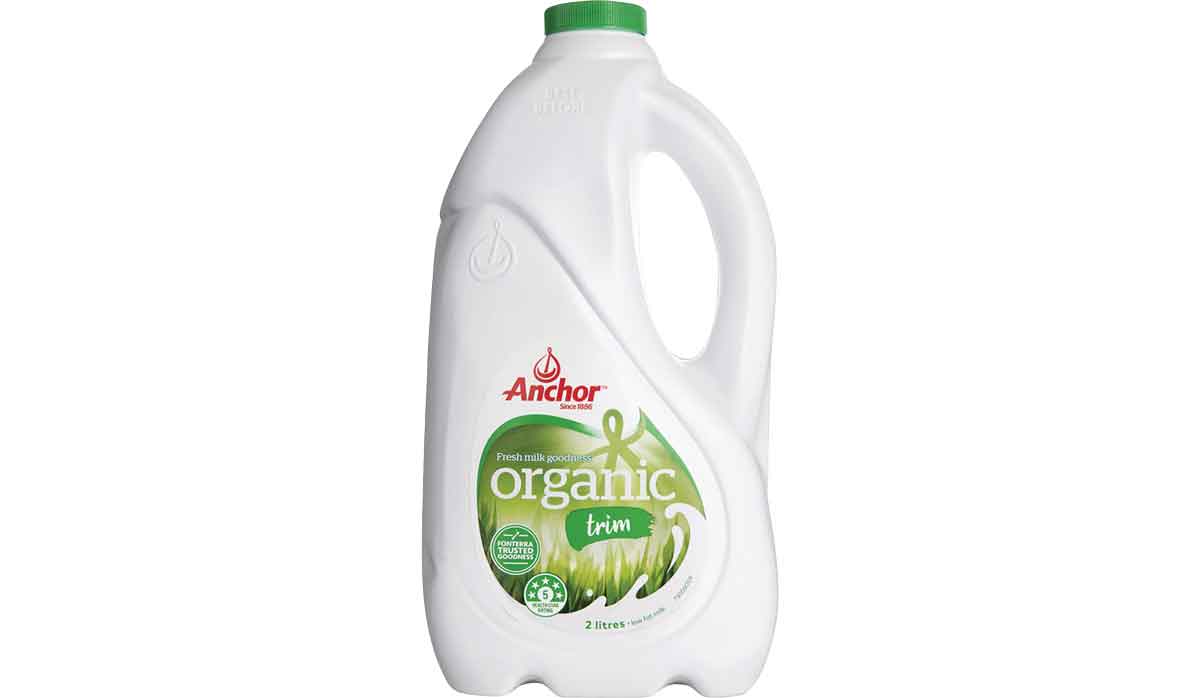Revamped Fonterra to be ‘more capital-efficient’
Fonterra chair Peter McBride says the divestment of Mainland Group is their last significant asset sale and signals the end of structural changes.
A small but select group of Fonterra farmers are on the cusp of setting a new milk payout record.
The co-op’s 60 organic milk suppliers are forecast to receive $9.80/kgMS for last season’s milk. A final wash-up payment in October could potentially take that payout into double digits – over the $10 mark – a first for New Zealand dairy industry.
Fonterra global business manager organic, Andrew Henderson told Dairy News that the last season had been an “incredibly good year” for the co-op’s organic business.
Henderson believes a payout over $10/kgMS farmgate milk price is highly likely – based on returns from sales.
Fonterra has a small niche organic business – just 60 fully certified organic suppliers supplying 5 million kgMS last season.
The co-op recently held a round of farmer meetings to update organic suppliers on the global market outlook. It also unveiled a new logo for its organics business.
Henderson says the feedback from farmer suppliers has been positive.
“They are very happy with the record payout and very supportive of the business,” Henderson told Dairy News.
Fonterra’s organics business has evaded any negative impacts of the Covid-19 pandemic raging around the world.
 |
|---|
|
Fonterra’s organic milk. |
Henderson says demand for organic dairy products has gone up in recent months.
Reports from retailers in key markets – the US, Australia and South Korea – suggest there has been increased demand for organic products as consumers focus on health and wellness during the pandemic.
“The outlook for organics is positive,” Henderson says.
Fonterra’s organic story is a positive one, propped by grass-fed cows and cost-effective farming practices.
Henderson says co-op has one of the best milk stories in the world, with brands that are trusted by consumers around the globe.
Fonterra’s organic suppliers are based throughout the North Island with most milk is processed in Waikato. The Waitoa plant makes organic milk powders and UHT milk, the Morrinsville plant butter and milk powders, while Hautapu produces cheese, whey protein concentrates and milk protein concentrates. Anchor organic milk is generated at Palmerton North.
The list of organic milk suppliers is growing. This season Fonterra will collect organic milk from 74 suppliers and about 25 additional farms are in the process of becoming organic farms, a process that takes three years.
UDSA standard
Fonterra's organic certification is linked to US Department of Agriculture (USDA) standards.
Henderson says the USDA organic standards are one of the toughest in the world.
Fonterra’s main markets for organics are the US, South Korea and Australia.
While the co-op doesn’t export organic products to China, sales in NZ and Australia “end up in China”, Henderson told Dairy News.
The National Wild Goat Hunting Competition has removed 33,418 wild goats over the past three years.
New Zealand needs a new healthcare model to address rising rates of obesity in rural communities, with the current system leaving many patients unable to access effective treatment or long-term support, warn GPs.
Southland farmers are being urged to put safety first, following a spike in tip offs about risky handling of wind-damaged trees
Third-generation Ashburton dairy farmers TJ and Mark Stewart are no strangers to adapting and evolving.
When American retail giant Cosco came to audit Open Country Dairy’s new butter plant at the Waharoa site and give the green light to supply their American stores, they allowed themselves a week for the exercise.
Fonterra chair Peter McBride says the divestment of Mainland Group is their last significant asset sale and signals the end of structural changes.
President Donald Trump’s decision to impose tariffs on imports into the US is doing good things for global trade, according…
Seen a giant cheese roll rolling along Southland’s roads?